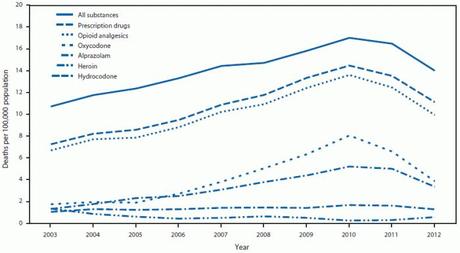 Ever since I started working with the homeless youth of Delhi, I have noticed their drug and substance dependence issues and how, despite knowing the ill-effects, they have not been able to get out from under the chemical spell. Thus, when I came across a short report in the CDC’s Morbidity and Mortality Weekly Reports that Florida had managed to lower its drug-related deaths in a matter of two years simply by legislative change, I had to read it.
Ever since I started working with the homeless youth of Delhi, I have noticed their drug and substance dependence issues and how, despite knowing the ill-effects, they have not been able to get out from under the chemical spell. Thus, when I came across a short report in the CDC’s Morbidity and Mortality Weekly Reports that Florida had managed to lower its drug-related deaths in a matter of two years simply by legislative change, I had to read it.
I will not go into the explicit details, please refer to the linked article for those, but let me recall a few glaring points from this report that can serve as a learning tool for all. First, the power of properly devised and implemented legislation, with punitive measures for rule-breakers is immense. This graph clearly shows that the legislative changes stifled the drug-related deaths at the peak of its reign:

Overdose death rates (per 100,000 population) for selected substances, by year — Florida, 2003–2012
To put into context the efficacy of the implemented measures, let me just give the background on the situation in Florida with a couple of cherry-picked examples. Out of the 100 highest office-based oxycodone prescribers in the whole of USA, 98 were practicing in Florida. Following the implementation of the new measures asking to cut down on wanton prescription of pain pills, the number of high prescribers in 2013 has come down to ZERO! A crackdown on the pain clinics which had started mushrooming around 2007, coinciding with the increase in pill-related deaths also led to closing of several non-compliant clinics.
The flip side of this, however, has two stories. One, the increased deaths from heroin, which doubled from 0.3 to 0.6 per 100,000 population. And two, the availability of pain treatment for legitimate patients.
As has been suggested in the current report, as well as in the literature I have perused, prevalence of heroin use seems to be a pretty dynamic number. Whether it is because a large proportion goes undetected in traditional drug use research (under-reporting), or because its illicit status makes the users less eager to seek medical treatment (incidental case detection), eliciting the true number of heroin users is a difficult task. However, a doubling of the death rates is, in no way something that can be brushed under the carpet. The numbers may seem minute in the larger scheme of things, but it remains there, like an open, festering wound needing attention.
The bigger worry is that with such severe legal clampdown on the pain clinics and pill-prescribers, legitimate practitioners will now dither before providing adequate pain coverage to people who genuinely need it. Patients suffering from post-operative, cancer-related or neuralgic pain may be forced to needlessly suffer because their doctors will now feel wary of prescribing painkillers (especially opioids) as and when needed. I have seen and experienced this problem in my own experience when I worked in the Critical Care setting, where we would watch our patients suffer, because our hands were tied and obtaining opioid analgesics was a complex, bureaucratic procedure marred by our own fear of prescribing them and pharmacies’ vacillations in providing the drugs.
But, from this whole experience, the one learning point that I can take away as a student of public health is that well-designed legislation, when implemented in full force, with the intention to bring about compliance, can be a more compelling tool to change the course of public health problems than mere behaviour change communication or information, education, and communication efforts.
Reference:

